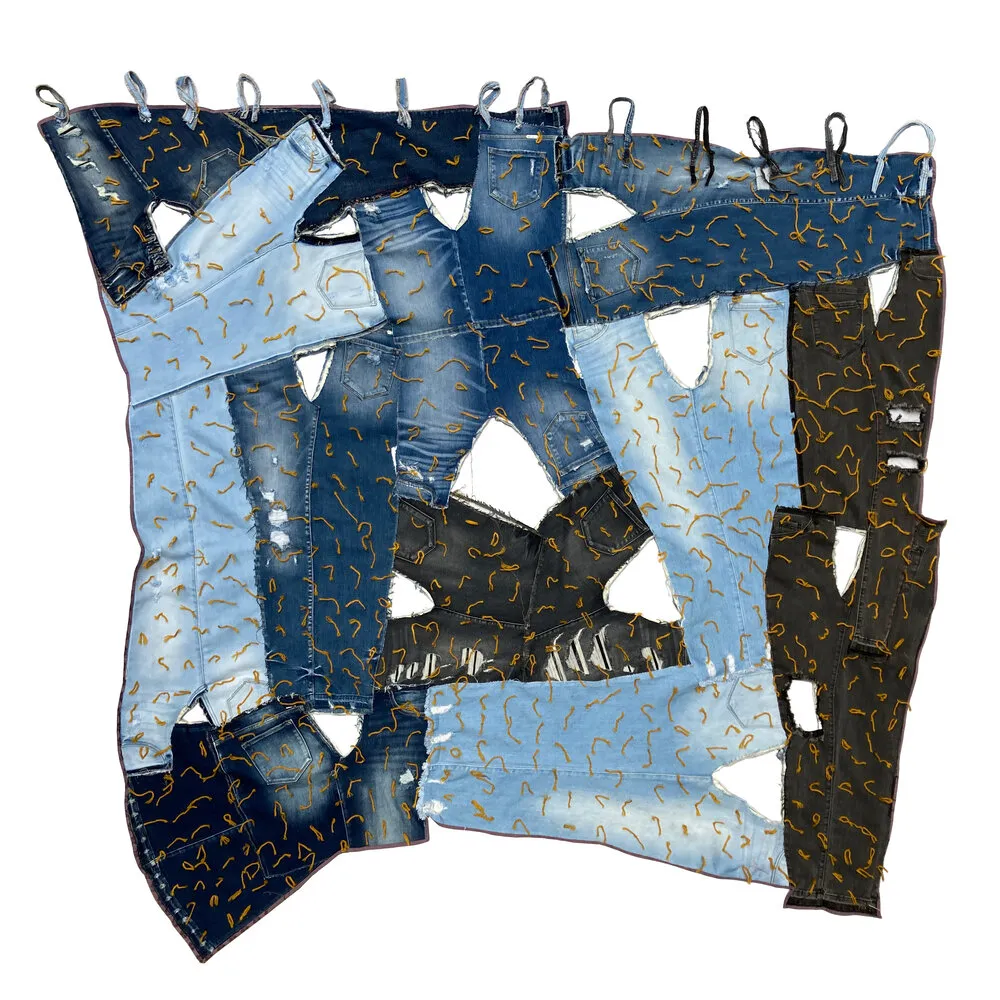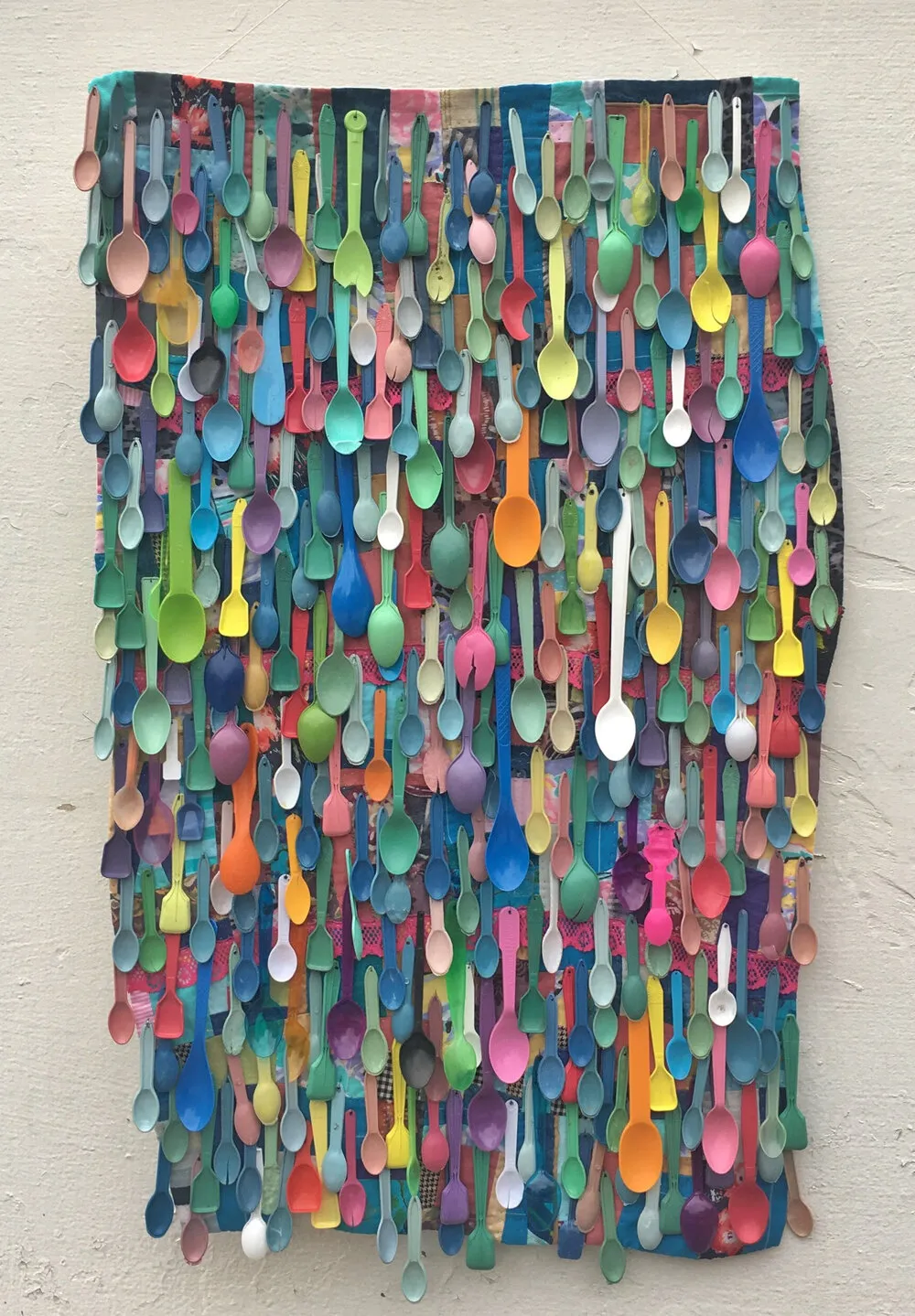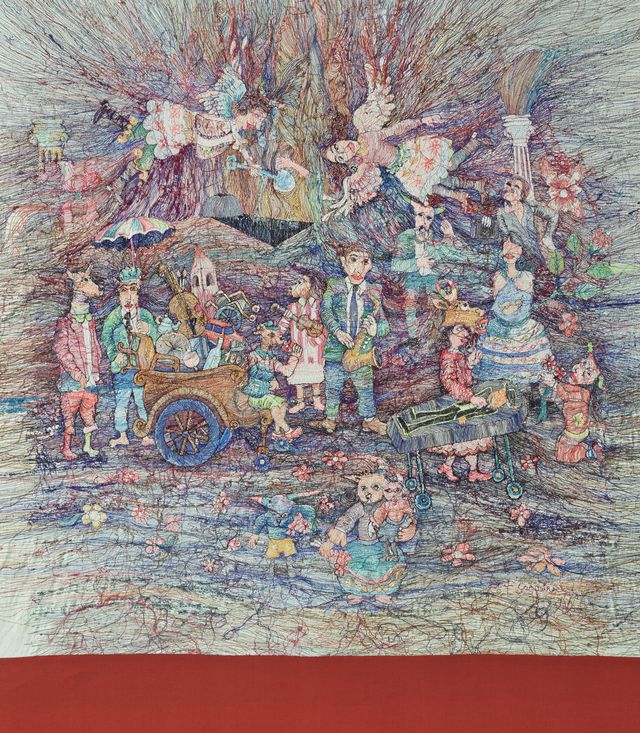
intika: men in textiles
May 15 - August 17, 2025
OMA WEST AT THE SEABIRD
Curated By Natalie Gonzalez, in collaboration with Armando Garcia-Orso of Visions Museum of Textile Arts
SELECT WORKS
“... How we look at the moon, how we see the birds, how we plant, we give life to our textiles. We weave our life in the girdles, we weave as we do the parties, as we make the roofs, like we make our marriages, we weave our living together in harmony with Pachamama (Mother Earth)”.
–Juan Quispe Huatta, 38 years / Weaving Our Life: Testimonies about the Textile Art of Taquile / Ministry of Culture of Peru
“Textile history is almost as old as human civilization, and as time has passed, the history of textiles has become more enriched. Throughout history, women have been heavily involved in textile production, but men have also been involved in many cultures in textile art.
For nearly 500 years the men of Taquile, Peru, have used textiles as a way to express themselves. The Spaniards renamed the place Taquile after a prominent Spanish nobleman, but its indigenous name “Intika” is still used by the locals today. In 2008, their textile art was added to UNESCO's Representative List of Oral and Intangible Heritage of Humanity. Seven men on the island were recognized as Masters in Textiles, and in this context, they experienced a new process of becoming aware of the importance of textile art.
Textile art is undergoing a transformation, breaking away from traditional associations and embracing a contemporary perspective that transcends gender norms. It breathes life into stories, reflects political struggles, and provides a canvas for healing and memory.
The INTIKA exhibition seeks to showcase the diverse works of male artists from various backgrounds, each employing different textile techniques. Artists push the boundaries of traditional textile art by experimenting with unconventional materials or incorporating elements from other disciplines like sculpture or installation art.
The exhibition shows how textiles and clothing are deeply intertwined with cultural norms and gender roles across different civilizations. Whether it’s knitting hats or creating intricate embroidery, men have played a vital role in shaping the history of textiles with pieces that evoke strong emotional responses through their beauty, symbolism, or pieces that address contemporary issues such as politics, the environment, or social justice from a male perspective and to harness this moment and explore it in diverse contexts.”
–Armando Garcia-Orso / Natalie Gonzalez / Daril Fortis
- - -
“... Como miramos la luna, como vemos a los pájaros, como Plantamos, damos vida a nuestros textiles. Tejemos nuestro vida en las fajas, tejemos como hacemos las fiestas, como hacemos las los techos, como hacemos nuestros matrimonios, tejemos nuestra convivencia en armonía con la Pachamama (Madre Tierra)”.
–Juan Quispe Huatta, 38 años / Tejiendo Nuestra Vida: Testimonios sobre el Arte Textil de Taquile / Ministerio de Cultura del Perú
“La historia textil es casi tan antigua como la civilización humana y, a medida que ha pasado el tiempo, la historia de los textiles se ha enriquecido. A lo largo de la historia, las mujeres han estado muy involucradas en la producción textil, pero los hombres también han estado involucrados en muchas culturas en el arte textil.
Durante casi 500 años, los hombres de Taquile, Perú, han utilizado los textiles como una forma de expresarse, los españoles rebautizaron el lugar como Taquile en honor a un prominente noble español. Su nombre indígena "Intika" todavía es utilizado por los locales. Su arte textil fue inscrito en 2008 en la Lista Representativa del "Patrimonio Oral e Inmaterial de la Humanidad" de la UNESCO y en este contexto, experimentaron un nuevo proceso de toma de conciencia de la importancia del arte textil, pero esta vez bajo el estímulo de su propia búsqueda dirigida a comprender por qué el arte textil es importante para sus vidas. Siete hombres de la isla fueron reconocidos como Maestros en Textiles.
El arte textil está experimentando una transformación, rompiendo con las asociaciones tradicionales y adoptando una perspectiva contemporánea que trasciende las normas de género. Da vida a las historias, refleja las luchas políticas y proporciona un lienzo para la sanación y la memoria.
La exposición INTIKA busca mostrar las diversas obras de artistas masculinos de diversos orígenes, cada uno empleando diferentes técnicas textiles. Artistas que traspasan los límites del arte textil tradicional experimentando con materiales no convencionales o incorporando elementos de otras disciplinas como la escultura o la instalación.
La exposición muestra cómo los textiles y la ropa están profundamente entrelazados con las normas culturales y los roles de género en diferentes civilizaciones. Ya sea tejiendo sombreros o creando intrincados bordados, los hombres han desempeñado un papel vital en la configuración de la historia de los textiles con piezas que evocan fuertes respuestas emocionales, ya sea a través de su belleza, simbolismo o piezas que abordan temas contemporáneos como la política, el medio ambiente o la justicia social desde una perspectiva masculina y para aprovechar este momento y explorarlo en diversos contextos.”
–Armando Garcia-Orso / Natalie Gonzalez / Daril Fortis
PARTNERING WITH
VISIT
OMA West At The Seabird, an Annex Gallery of Oceanside Museum of Art, is located inside the Seabird Resort in downtown Oceanside, at 101 Mission Avenue, Oceanside, CA 92054. The gallery is on the ground floor towards the back of the building, accessed through the front of the hotel.
FURTHER INFORMATION
If you would like to learn more about the artwork on view please email OMA West Exhibition Coordinator Natalie Gonzalez, natalie@oma-online.org.









